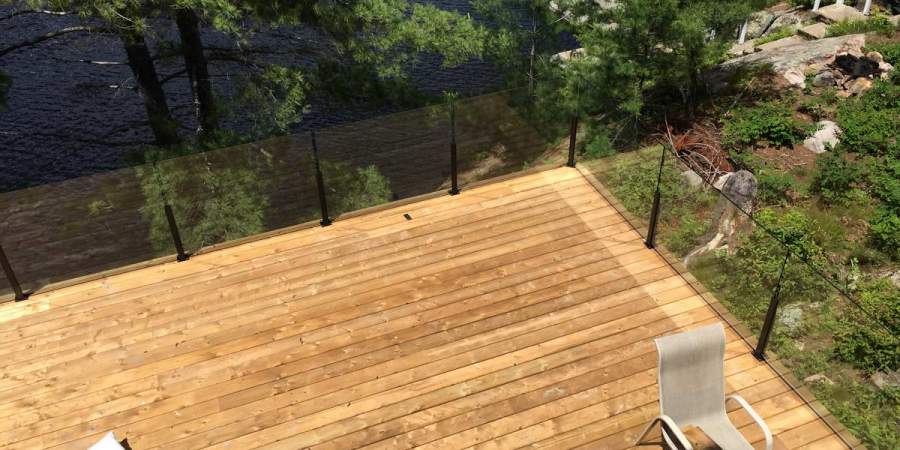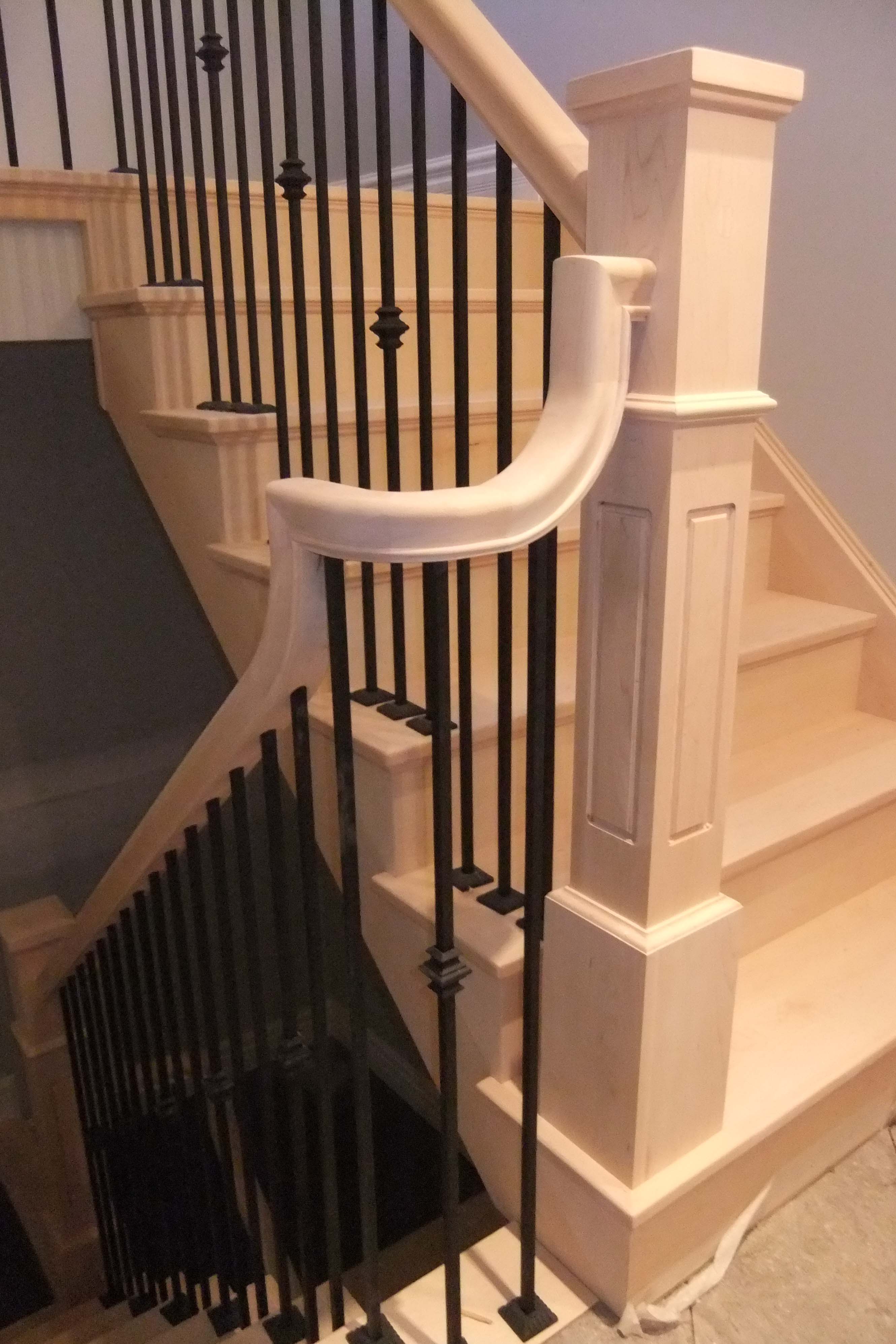

- Stair railing height ontario building code code#
- Stair railing height ontario building code plus#
Walkline – for curved stairs, the inner radius of the curve may result in very narrow treads. Per Ontario Building Code, the minimum headroom is 1,950mm (6ft 5”). Headroom is the height above the top of a tread to the ceiling above it. The pitch line is the imaginary line along the tip of the nosing of the treads.  The slope or pitch of the stairs is the ratio between the rise and the run (not the tread depth, due to the nosing). The total rise of the stairs is the height between floors (or landings) that the flight of stairs is spanning. It is often not simply the sum of the individual tread lengths due to the bullnose overlapping between treads The walkline is the imaginary line 12 away from the inner edge on which people are. Walkline for curved stairs, the inner radius of the curve may result in very narrow treads.
The slope or pitch of the stairs is the ratio between the rise and the run (not the tread depth, due to the nosing). The total rise of the stairs is the height between floors (or landings) that the flight of stairs is spanning. It is often not simply the sum of the individual tread lengths due to the bullnose overlapping between treads The walkline is the imaginary line 12 away from the inner edge on which people are. Walkline for curved stairs, the inner radius of the curve may result in very narrow treads. Stair railing height ontario building code code#
The Ontario Building Code outlines the minimum requirements for various. Per Ontario Building Code, the minimum headroom is 1,950mm (6ft 5) OBC 9.8.2.2. Deck guards (railings) are to be a minimum of 36 high on all decks that are.
The total run of the stairs is the horizontal distance from the face of the first riser to the face of the last riser. Headroom is the height above the top of a tread to the ceiling above it. To avoid confusion, the number of steps in a set of stairs is always the number of risers, not the number of treads. In Ontario, the allowable range for a run 210mm (8-1/4”) to 355mm (14”). A person using the stairs would move this distance forward with each step they take. The run of each step is measured from the face of a vertical riser to the face of the next riser up. Stair railing height ontario building code plus#
The tread depth of a step is measured from the edge of the bullnose to the face of the vertical riser if the steps have no bullnose, it is the same as the run otherwise it is the run plus the extent of one bullnose. In Ontario, the allowable range for a rise is 125mm (4-7/8”) to 200mm (7-7/8”). A person using the stairs would move this distance vertically for each step they take. It is not the physical height of the riser the latter excludes the thickness of the tread. The rise of each step is measured from the top of one tread to the top of the next tread. The following stair measurements are important: (592 sq.ft) in area and who understands and is willing to take accountability for the related requirements in the Ontario Building Codeĭownload an example of a deck drawing (PDF).The measurements of a stair, in particular the rise (height) and run (depth) of the steps, should remain consistent throughout the stairs. Stairs shall conform to section 9.8 of the Ontario Building Code. any person is allowed to prepare and take responsibility for the design of an unroofed deck that is equal to or less than 55 sq.m. The design and construction of the Deck must conform to the requirements of. a homeowner prepared to take legal responsibility for the design of a deck who understands and is willing to take accountability for the related requirements in the Ontario Building Code. If guardrails are required to make a stair landing. qualified designers with a Building Code Identification Number (BCIN) The National Building Code sets the height of a handrail between 86.5 cm (34 in.) and 96.5 cm (38 in.). You need a set of drawings and the following forms to make an application: Visit the General Building Information page for changes to the building permit application process and inspections.Ī building permit is required if you're altering a deck that previously had a permit, if it's 24 inches or more above ground, or if it has a roof.






 0 kommentar(er)
0 kommentar(er)
